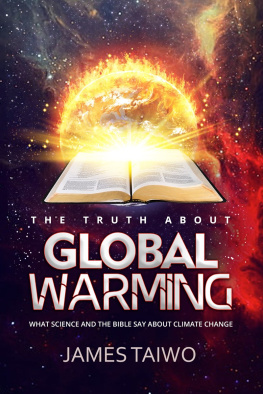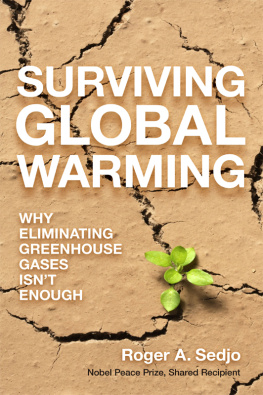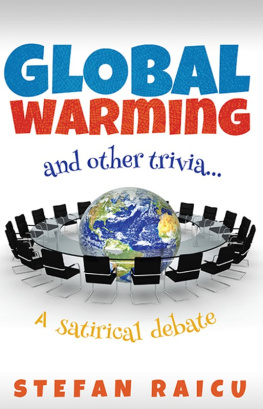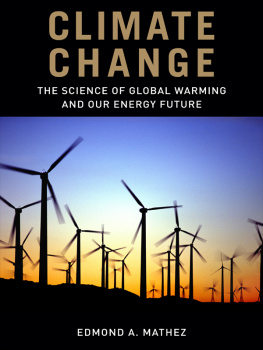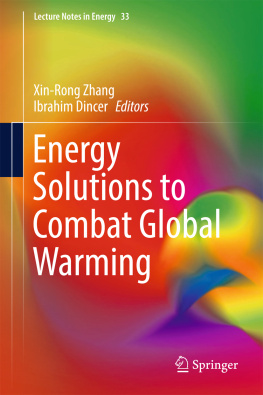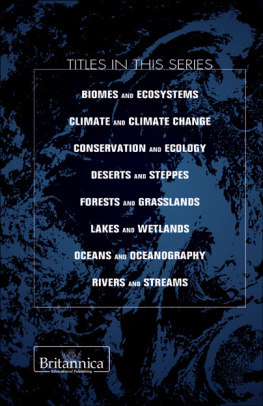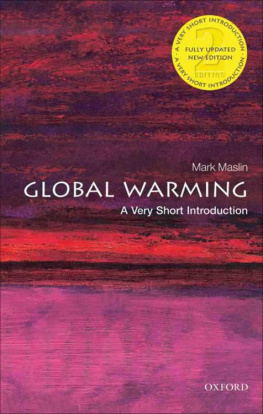GLOBAL WARMING
THE ENVIRONMENT: OURS TO SAVE
GLOBAL WARMING
EDITED BY MICHAEL ANDERSON

Published in 2012 by Britannica Educational Publishing
(a trademark of Encyclopdia Britannica, Inc.)
in association with Rosen Educational Services, LLC
29 East 21st Street, New York, NY 10010.
Copyright 2012 Encyclopdia Britannica, Inc. Britannica, Encyclopdia Britannica, and the Thistle logo are registered trademarks of Encyclopdia Britannica, Inc. All rights reserved.
Rosen Educational Services materials copyright 2012 Rosen Educational Services, LLC.
All rights reserved.
Distributed exclusively by Rosen Educational Services.
For a listing of additional Britannica Educational Publishing titles, call toll free (800) 237-9932.
First Edition
Britannica Educational Publishing
Michael I. Levy: Executive Editor, Encyclopdia Britannica
J.E. Luebering: Director, Core Reference Group, Encyclopdia Britannica
Adam Augustyn: Assistant Manager, Encyclopdia Britannica
Anthony L. Green: Editor, Comptons by Britannica
Michael Anderson: Senior Editor, Comptons by Britannica
Sherman Hollar: Associate Editor, Comptons by Britannica
Marilyn L. Barton: Senior Coordinator, Production Control
Steven Bosco: Director, Editorial Technologies
Lisa S. Braucher: Senior Producer and Data Editor
Yvette Charboneau: Senior Copy Editor
Kathy Nakamura: Manager, Media Acquisition
Rosen Educational Services
Hope Lourie Killcoyne: Senior Editor and Project Manager
Nelson S: Art Director
Cindy Reiman: Photography Manager
Matthew Cauli: Designer, Cover Design
Introduction by Hope Lourie Killcoyne
Library of Congress Cataloging-in-Publication Data
Global Warming / Michael AndersonFirst Edition.
p. cm.(The Environment: Ours to Save)
In association with Britannica Educational Publishing, Rosen Educational Services.
Includes bibliographical references and index.
ISBN 978-1-61530-555-1 (eBook)
1. Global warming--Juvenile literature. I. Anderson, Michael (Michael J.), 1972
QC981.8.G56G574416 2012
363.738'74dc22
2010049962
On the cover (front inset): Climate scientists report that Briksdalsbreen, a relatively short and steep glacier in Jostedalsbreen National Park in Norway, is melting at a very fast rate. Norway is home to more than 1,500 glaciers. Shutterstock.com; (front background, back cover, page 3): Icebergs off the coast of Greenland. www.istockphoto.com/Robert Becker
Interior background www.istockphoto.com/Tobias Helbig
CONTENTS




INTRODUCTION
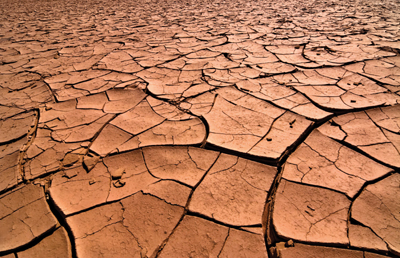
L iving things have average temperatures. For humans, normal body temperature is 98.6 F (37 C). For most birds, average body temperature is a little higherfrom 104 to 108 F (40 to 42 C).
Planets, while not living entities, nevertheless also have average temperatures. For Venus, the hottest planet in the solar system, the average surface temperature is about 867 F (464 C), hot enough to melt lead. The average surface temperature of Mars is about 82 F (63 C). The average temperature on Earth is about 60 F (16 C). Or at least, thats the current figure. Scientists have observed and noted that over the past 100 years the temperature of our planet has been rising. And just as an above-normal body temperature is a warning sign of illness, a growing number of scientists are asserting that the rising surface temperature on Eartha phenomenon known as global warmingis a global warning sign we need to heed.

Shrinking habitats, such as that for this polar bear and her cubs, is one possible outcome of an increasingly hotter planet. Scientists predict that if the Arctic sea ice continues melting as projected, the polar bear population of 2050 may be one third of what it is today. Johnny Johnson/Riser/Getty Images
In this book, readers will learn about the greenhouse effect and how it is connected to global warming. Much like plants in a greenhouse, all of us on Earth are encased in an atmosphere that traps heat from the Sun. Carbon dioxide, water vapor, methane, and other gases, which do the trapping, have been responsible for keeping the planet warm enough for life to thrive. The issue before us all now, though, is that these so-called greenhouse gases are increasingsome believe dramaticallyand with them their heat-trapping properties. Such an increase and its impact on global climate are of great concern.
Why the increase? As readers of this book will discover, with the onset of the Industrial Revolution some 200 years ago, machines began making the products people used to make by hand. That development was followed by advances in transportation, such as the advent of the steam engine, the car, and the airplane. These machines, running on fossil fuels, emit exhaust, sharply raising the concentrations of atmospheric gases that had, prior to 1800 or so, been relatively stable for thousands of years. Today, about 90 percent of the power used to run machines comes from the burning of fossil fuels. To further complicate matters, the widespread cutting down of forests means that treesnatures own carbon dioxide eaters (CO2 is used by trees to make their food)are being removed from an equation that they might otherwise help to balance.
Whether or not global warming is a natural fluctuation or a human-caused phenomenon has been debated in the media, though scientists now widely agree that humans are indeed the cause of the past centurys steep temperature rise. Evidence collected from thermometers for roughly the past 150 years as well as paleoclimatic data taken from glacial ice cores, tree rings, and other sources show that the surface temperature on Earth is indeed rising. Glaciers are melting, animal habitats are dwindling, and weather events such as hurricanes, typhoons, and heat waves seem to be on the rise. Read on to discover the science behind the debate, the effects rising temperatures are having and are projected to have, and what the world is doing in response.
CHAPTER 1
GLOBAL WARMING: EARTHS CHANGING CLIMATE

T he rise of air temperatures near Earths surface over the past century is known as global warming. Earth has experienced periods of gradual warming and cooling throughout its existence due to natural causes, such as volcanic eruptions and variations in the Suns output. However, scientists have attributed the current increase in global temperatures to human causesprimarily the release of certain gases into the atmosphere as a result of industrial activity. These gasescollectively termed greenhouse gasesabsorb and trap heat emitted from Earths surface through a phenomenon known as the greenhouse effect.
Next page








